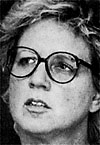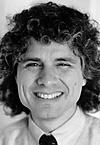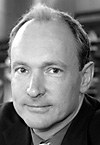MIT researchers are among visionaries featured in end-of-the-year magazine stories that either profile or query experts about developments in their field.
Professor Robert S. Langer is one of the "15 people who will reinvent your future," according to a Dec. 10 piece in Forbes Magazine.
In its December issue, Scientific American includes Professor Alice Amsden of urban studies and planning among 50 "visionaries from the worlds of research, industry and politics whose recent accomplishments point toward a brighter technological future for everyone."
Professor Steven Pinker was one of the "10 top scientists" the British science magazine Focus asked to look into the future. Focus also cited Tim Berners-Lee's conception of the World Wide Web as one of the top 10 science stories over the last 10 years. Berners-Lee is a senior research scientist at the Laboratory for Computer Science.
LANGER
Monte Burk, writing in Forbes, dubs Langer "Plastic Man," describing him as "an architect in plastic whose remarkable work may one day let you grow a new heart or replace a bone."
Langer, the Germeshausen Professor of Chemical and Biomedical Engineering, is the "top of the top in [the field of] tissue engineering," Bruce Hamilton of the National Science Foundation told Burke. Hamilton should know; he's director of bioengineering and environmental systems at the agency.
Burke also notes Langer's work in a variety of other areas, including the controlled release of cancer drugs. For example, his degradable wafer for distributing drugs directly to brain tumors "became the first new brain cancer treatment in 25 years when the FDA approved it in 1996."
The Forbes profile caps a particularly extraordinary year for Langer. In January he was awarded the Charles Stark Draper Prize, a $500,000 award considered to be engineering's equivalent of the Nobel Prize. He received the prize for his work on drug delivery technologies.
AMSDEN
In its December issue, Scientific American includes Professor Alice Amsden of urban studies and planning among the 50 "visionaries from the worlds of research, industry and politics whose recent accomplishments point toward a brighter technological future for everyone." The Scientific American 50 "have demonstrated clear, progressive views of what our technological future could be, as well as the leadership, knowledge and expertise essential to realizing those visions."
Amsden was cited because she "identified strategies for economic development that could be of singular value to non-Western countries on the rise," the magazine said.
Amsden, too, has had a good year. In January she wrote an editorial for the New York Times on globalization and how it remains provincial. "A smattering of rich countries exercises leadership in international organizations and world markets, despite the principle of a level playing field," she wrote.
PINKER
To celebrate its 10th anniversary, Focus looked at the scientific advances of yesterday and tomorrow. MIT researchers are featured in each.
Focus asked Pinker several questions about the future. For example, what major advances does he expect to see in his area of science over the next 10 years?
"We'll know more about what parts of the brain are involved in a greater number of human activities," said the Peter De Florez Professor of Psychology. "Things like the appreciation of beauty, or the emotion of anger, or moral sense - we know they've got to be in there somewhere, unless you believe in the soul, but we haven't the foggiest idea where."
What does he think will be most different about the world in 2012? "It could be a smouldering ruin. Or it could have greater peace, prosperity and democracy. I'm more of an optimist than a pessimist. I think that, on the whole, things have been getting better in the last 50 years, and, on the whole, they'll continue to get better."
BERNERS-LEE
Focus cited Berners-Lee's conception of the World Wide Web as one of the top 10 science stories over the last decade. The web, says the magazine, is "the biggest advance in information technology since Gutenberg's invention of the printing press in 1450."
A version of this article appeared in MIT Tech Talk on December 18, 2002.









